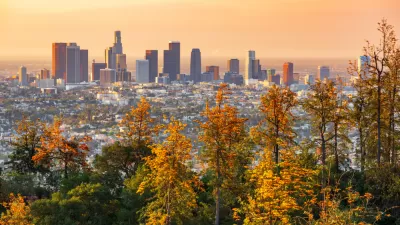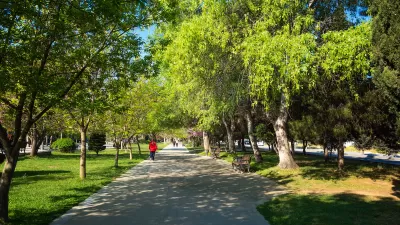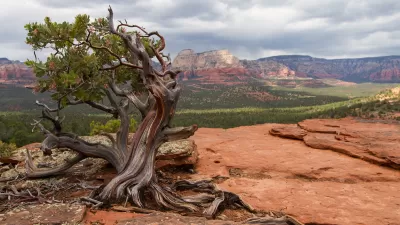As extreme weather intensifies, cities are using trees to mitigate the effects of climate change and reduce energy consumption.
Rather than seeing trees simply as a form of beautification, writes Joss Fong, it's time to acknowledge their role as "a living form of infrastructure, providing services that include stormwater management, air filtering, carbon sequestration, and, most importantly for a city like Phoenix, Arizona, they cool the environment around them."
With extreme heat waves happening with increasing frequency, Sun Belt cities like Phoenix are exploring a variety of ways to cool their urban cores and reduce energy demand during the summer months. "Phoenix recently pledged to reach 'tree equity' by 2030, under an agreement with American Forests, a national tree organization."
This video from Vox uses drone imagery and thermal cameras to show "how the urban design of the city contributes to extreme heat, and what it can do to cool down."
FULL STORY: How America’s hottest city is trying to cool down

Planetizen Federal Action Tracker
A weekly monitor of how Trump’s orders and actions are impacting planners and planning in America.

Maui's Vacation Rental Debate Turns Ugly
Verbal attacks, misinformation campaigns and fistfights plague a high-stakes debate to convert thousands of vacation rentals into long-term housing.

Restaurant Patios Were a Pandemic Win — Why Were They so Hard to Keep?
Social distancing requirements and changes in travel patterns prompted cities to pilot new uses for street and sidewalk space. Then it got complicated.

In California Battle of Housing vs. Environment, Housing Just Won
A new state law significantly limits the power of CEQA, an environmental review law that served as a powerful tool for blocking new development.

Boulder Eliminates Parking Minimums Citywide
Officials estimate the cost of building a single underground parking space at up to $100,000.

Orange County, Florida Adopts Largest US “Sprawl Repair” Code
The ‘Orange Code’ seeks to rectify decades of sprawl-inducing, car-oriented development.
Urban Design for Planners 1: Software Tools
This six-course series explores essential urban design concepts using open source software and equips planners with the tools they need to participate fully in the urban design process.
Planning for Universal Design
Learn the tools for implementing Universal Design in planning regulations.
Heyer Gruel & Associates PA
JM Goldson LLC
Custer County Colorado
City of Camden Redevelopment Agency
City of Astoria
Transportation Research & Education Center (TREC) at Portland State University
Jefferson Parish Government
Camden Redevelopment Agency
City of Claremont





























